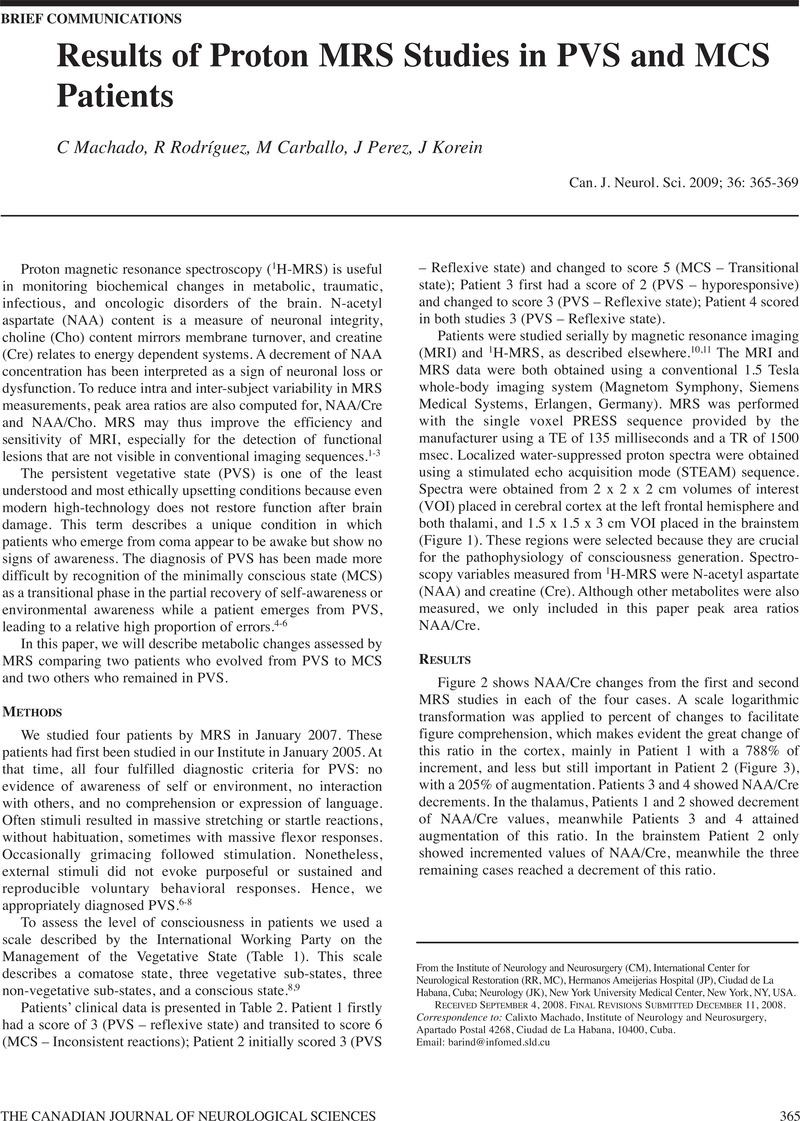Crossref Citations
This article has been cited by the following publications. This list is generated based on data provided by Crossref.
Machado, C.
and
Korein, J.
2009.
Persistent Vegetative and Minimally Conscious States.
Reviews in the Neurosciences,
Vol. 20,
Issue. 3-4,
Machado, C.
Rodríguez, R.
Caiballo, M.
Korein, J.
Sanchez-Catasus, C.
Pérez, J.
and
Leisman, G.
2009.
Brain Anatomy, Cerebral Blood Flow, and Connectivity in the Transition from PVS to MCS.
Reviews in the Neurosciences,
Vol. 20,
Issue. 3-4,
Racine, Eric
Rodrigue, Catherine
Bernat, James L.
Riopelle, Richard
and
Shemie, Sam D.
2010.
Observations on the Ethical and Social Aspects of Disorders of Consciousness.
Canadian Journal of Neurological Sciences / Journal Canadien des Sciences Neurologiques,
Vol. 37,
Issue. 6,
p.
758.
Rodriguez-Rojas, Rafael
Machado, Calixto
Álvarez, Lázaro
Carballo, Maylen
Estevez, Mario
Perez-Nellar, Jesus
Pavon, Nancy
Chinchilla, Mauricio
Carrick, Frederick R.
and
DeFina, Philip
2013.
Zolpidem induces paradoxical metabolic and vascular changes in a patient with PVS.
Brain Injury,
Vol. 27,
Issue. 11,
p.
1320.
Machado, Calixto
2023.
Christopher agamemnon pallis and julius m. Korein: Two main inspiring pioneers leading the u.k.-u.s. Divide on brain death determination.
Interdisciplinary Neurosurgery,
Vol. 31,
Issue. ,
p.
101672.



